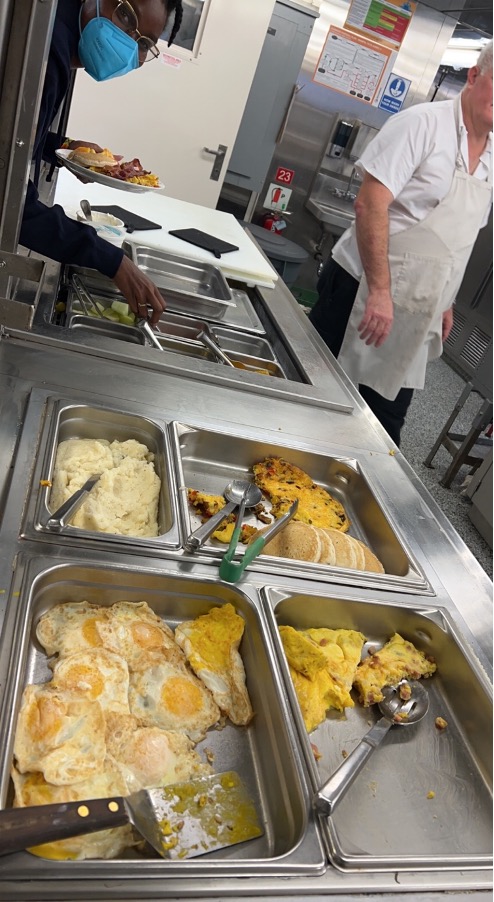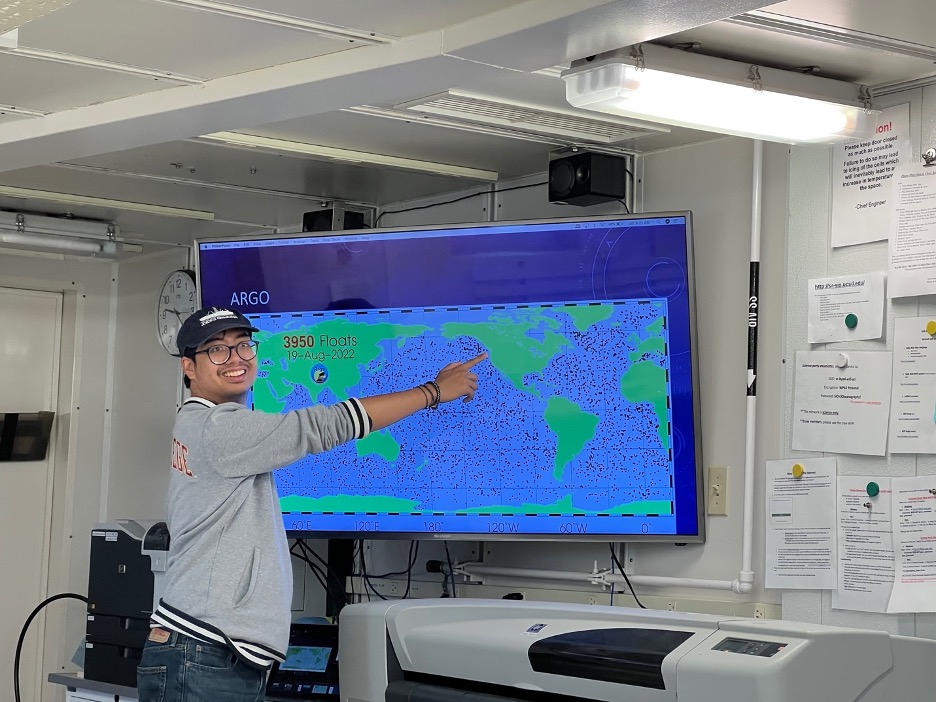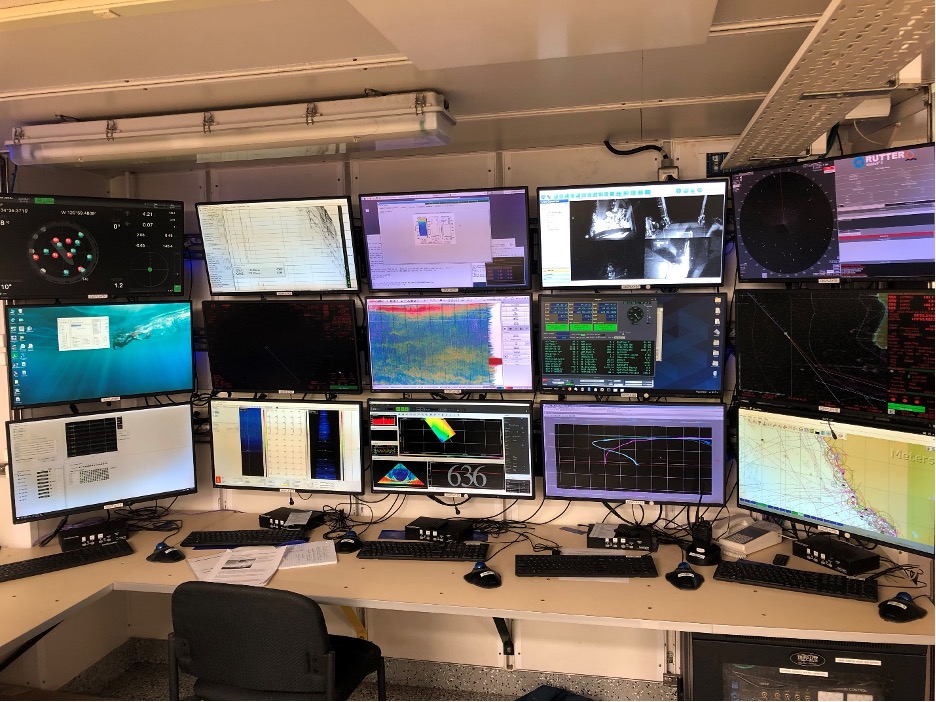When I first found this program, I never imagined myself here. I couldn’t foresee the deeply impactful and inspiring events to come. At the time that I applied, I felt adrift. I had little to no confidence in myself or what I could give to science, I questioned if there was even space for people like me in STEM, and whatever space there was I was sure that I wasn’t worthy of it. Finding my niche has been a long and tangential journey. Growing up with ADHD, and being generally misunderstood by my instructors, meant that I was often made to feel less than; less intelligent, less worthy, less potential for success. But the moment that I stepped onto the R/V Sally Ride, this was all washed away with the waves. Little did I know that this moment was just the very beginning of something so wonderful it is almost beyond words…

The August 2022 STEMSEAS group on the gangway of the R/V Sally Ride, preparing to sail out of Seattle.
The following is a quote from a journal entry about my first day at sea, “Every second that I spend on the Sally Ride feels like the peak of my life until that moment ends and the next begins. And this is just the beginning.” I am pleased to say that this sentiment remained true throughout our voyage. Every day I was learning and experiencing something new and exciting. Finding my sea legs was a struggle at first and sleeping on the top bunk is a bit more complicated at sea. But conquering each thing was a triumphant milestone! Every first that I experienced felt like a new gift the waves had brought me.
I’m not even sure where to begin with the marine life! Going into this experience my expectations were low, if I kind of maybe saw a whale out in the distance, I was going to be happy. So to see a huge pod of whales swim right past us, on the first day, blew my expectations right out of the water. It didn’t stop there, from jellyfish to otters, seals to sea lions, dolphins to plankton, and even a tiny octopus larva, the marine life we saw was endless and beyond anything I could have previously imagined. It shouldn’t be a shock that my expectations for my next excursion are infinitely higher. By far the best sighting happened under the clearest night sky I’ve ever seen, with the milky way stretching over the infinite horizon, bioluminescence littered the water as if the sea and sky were one. I’ve never seen anything like it, it lit something inside me, a new curiosity to be explored. The night that we first saw it, Melanie and I collected plankton from the sea water hose in the lab to look through the following morning. That began a pattern of late nights spent looking down from the bow and long days spent looking down through a microscope. The following night we were blessed with an even greater gift, dolphins leapt and glided through the bioluminescent water, leaving trails of light behind them. It was almost like a dream, one that I never wanted to wake up from.
As I mentioned before, I have often questioned my journey through science, I have felt like my path was uncommon and abnormal. Everyone I knew had relatively straightforward paths, with few detours, obstacles, or dead ends. So, by far one of the more impactful aspects of this trip was to hear from the instructors and crew members about their own journeys full of unexpected destinations, detours, obstacles, etc. I even felt validated by the stories of my peers. To see that the people who inspire me, have been where I am now, some with similar doubts and worries, was the greatest relief. It was just what I needed to hear in order to refuel myself and continue down this path I’ve started. Similarly, hearing about what career paths are available to me helped me to broaden my ideas of what I could accomplish in my future career and how. Science communication in particular was of great interest to me, and it is something that I think everyone in STEM should have a proficient understanding of. Sara ElShafie’s way of using these concepts of storytelling to communicate science was world expanding for me. Not just for how I plan to communicate science to the general public, but for how I communicate to my friends and family, many of which have limited understanding of my field. Sara ElShafie’s work inspires me in many ways to be a better scientist and science communicator. I am certain I will use this knowledge, as well as everything that I have learned on this cruise, in my future career. Each instructor brought many things to the table, I learned such a wide array of concepts from each of them, and the ship made the best classroom.
In short terms, this week was life-changing. It reaffirmed my passion for science, it revived a childlike wonder for the curiosities of the world, it provided me with the opportunity to explore new interests, it connected me to so many amazing people; I learned about oceanic systems, marine life, how to communicate to a variety of audiences, and how to find myself when I’m feeling adrift. I am beyond grateful for each moment I spent on board and for each person that I had the privilege to spend them with.
– Alexis Watkins


















